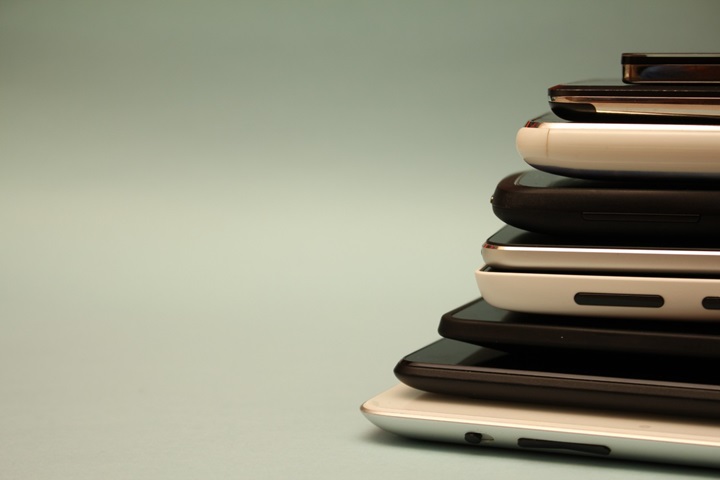In most developed markets, smartphones are increasingly kept for longer and consumers are more loyal to electronics brands than ever before. To continue to drive growth, brands are putting emphasis on their wider portfolio of electronic devices, hoping that a good experience with a smartphone will lead to greater adoption of products from the same brand.
Together, the two largest smartphone brands – Apple and Samsung – are owned by 75% of the population in Great Britain and the United States. Both brands also enjoy more than 75% loyalty in these markets. This means there are fewer accessible consumers to win. Finding sales through growing penetration of additional device categories has become an absolute priority for these brands.
Tablets, wearables (smartwatches and fitness bands), and laptops are all key growth areas for Apple and Samsung. Penetration of these categories is lower, presenting an opportunity to grow through attracting their smartphone customers to buy into those categories, as well as from existing category owners repurchasing.
Kantar’s Worldpanel ComTech data shows that in the United States and Great Britain, very few consumers already own all four device types (smartphone, tablet, laptop, and smartwatch): less than 10% of smartphone owners across both countries.

Table 1: Share of number of devices owned, among smartphone owners

This small proportion of highly connected consumers are technology enthusiasts. These consumers keep up with the latest phone trends, are the first to buy a new phone, pay more for phone quality and features, and use most of the features on their phone. Tech savviness amongst multi-device owners is also reflected in the smartphone screen size that these consumers opt for. 60% of consumers in the US and 59% in Great Britain with four devices have smartphones with a screen size of 6.0” or more, versus 38% and 44% respectively amongst those with only a smartphone.
The great news for brands is that increasing adoption of these wider categories will likely benefit them directly. 60% of consumers in Great Britain and the US state that they prefer consumer electronic brands that they are already familiar with. 17% state that it is important for them to synchronize all their electronic devices. The chances are – if consumers can be convinced to adopt tablets, laptops, and wearable devices – they will purchase the same brand as their smartphone.
A question brands will ask is whether multiple connected device ownership impacts consumers experience with their smartphone. Will consumers choose to browse social media on their tablet, track their health on their wearable, or create documents on their laptop? Engagement with smartphone devices leads to satisfaction, which ultimately drives loyalty and sales, so this is an important question to ask.
Smartphone usage activity increases in the US among those with three or more devices. In Great Britain there is a step change for consumers with four or more devices.

Table 2: Average number of weekly smartphone activities, by number of devices owned

When looking at device ownership combinations and resulting usage, it is tablets that compete most with smartphones. Entertainment (streaming video and music services, and downloading videos), mobile shopping, and creating/editing documents are less likely to be done on smartphone if the consumer also has a tablet.
Within the Android ecosystem it seems that multiple device ownership has an even more pronounced influence on smartphone usage than in iOS.

Table 3: Average number of weekly smartphone activities, by number of devices owned within the same OS Eco-system

So, there are compelling reasons for manufacturers to build their brand presence across the full device eco-system:
- Smartphone sales are harder to come by than ever before. Therefore, brands must diversify their revenue generation across other types of hardware.
- Multiple device ownership generally increases engagement and activity with the smartphone, leading to higher satisfaction and increased brand loyalty.
- Consumers who own multiple devices are more likely to agree with attitudinal statements that reflect an entrenched eco-system consumer, indicative of consumers who are more likely to stay brand loyal; “I prefer to buy the same brand across mobile technology categories” and “It is important for me to be able to synchronize all my electronic devices”
Understanding brand/OS usage and loyalty across the ecosystem is a complex task, and insights to understand the key drivers is essential.


